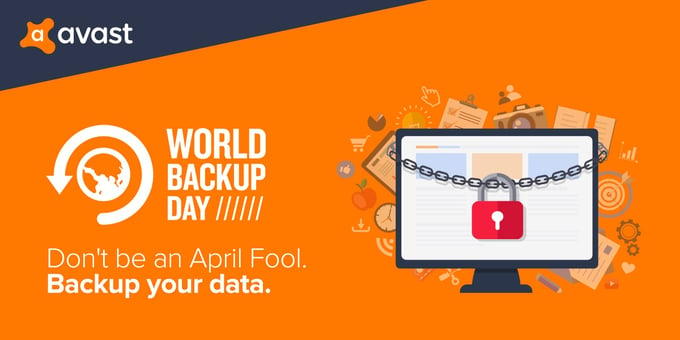In today’s digital world, protecting your data with regular backups is easy and economical, and critical to your business survival.
More than 40 years after the invention of the personal computer, it is astounding that we still need World Backup Day. This year’s event, which takes place on March 31st, the day before April Fool’s Day, ‘is a day for people to learn about the increasing role of data in our lives and the importance of regular backups.’ Here’s the key takeaway: You need to regularly back up your data because the chances of losing some or all of that data are high, and getting higher.

We live in an increasingly 24x365 connected world where massive amounts of personal and professional data need to be captured, distributed, massaged, and stored. With the growing use of cloud, mobility, devices, social media, and the Internet of Things, data creation and consumption is skyrocketing, but the very things which accelerate this data deluge also threaten the protection and retention of that data.
In this digital world it is so very easy to lose or damage your data. Causes of data loss include natural disasters, as well as: Device loss; accidental deletion or mislabeling; hardware and software failures; obsolete file formats; data theft (breaches); and, malware, viruses and ransomware. The two biggest culprits are hardware failures (40%) and human error (29%).
Losing personal data can be upsetting; losing business data can be fatal:
- 99% of all businesses do not perform daily backups, 60% of backups are incomplete, and 50% of restores fail
- 74% of organizations have experienced data loss at the workplace
- 70% of small businesses reported that a single loss in data could have a significant and costly impact on the business
- The estimated impact a disruption in technology resources can have on a small to medium-sized business is $15,000 per day
- Almost all companies (93%) that have experienced data loss, coupled with prolonged downtime for ten or more days, have filed for bankruptcy within twelve months of the incident, 50% filed for bankruptcy immediately, and 43% of companies with no data recovery and business continuity plan go out of business following a major data loss.
There are a variety of backup types, local and remote (i.e. cloud or offsite):
- A full or system image backup - copies everything but can be time and storage-consuming, as well as costly
- Hot or dynamic or active backups - capture your most important data, but not necessarily any changes taking place at the time
- Incremental and differential backups - back up new and/or changed data since the last backup
Each type of backup has its strengths and weaknesses and needs to be matched with your needs. Key considerations for selecting a backup vendor, solution, and/or service include:
- How do the capabilities of the backup vendor, solution and/or service align with my requirements, including resources and SLAs (Service Level Agreements)
- Ease of use
- Technical support, including training
- Total cost of ownership.
AVG Backup and Disaster Recovery ensures your business data is protected against the unexpected. Our cloud-based backup and disaster recovery protection gives you the ability to go back in time and restore clean versions of files prior to a ransomware infection.
Much like cybersecurity, backing up your data on an ongoing basis is part of the cost of doing business. Increasingly, businesses are looking to the cloud for flexible and affordable backup and recovery: 89% of IT leaders are planning to implement more cloud-based disaster recovery in the next year. Regardless of how you do it, backing up your data makes sense, and World Backup Day is a good time to start.